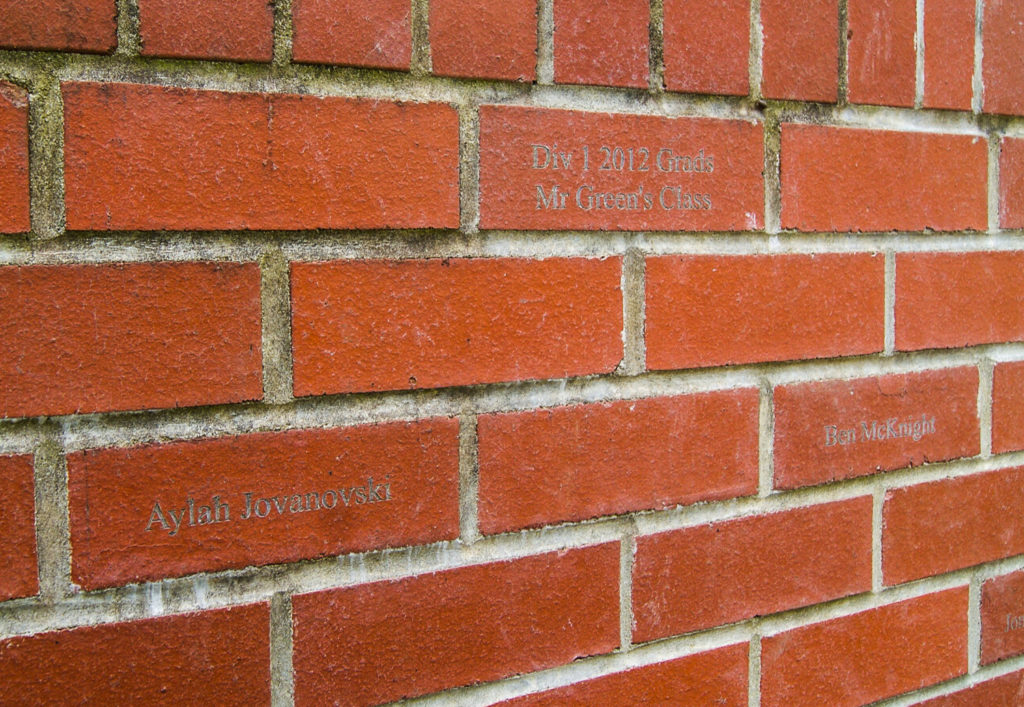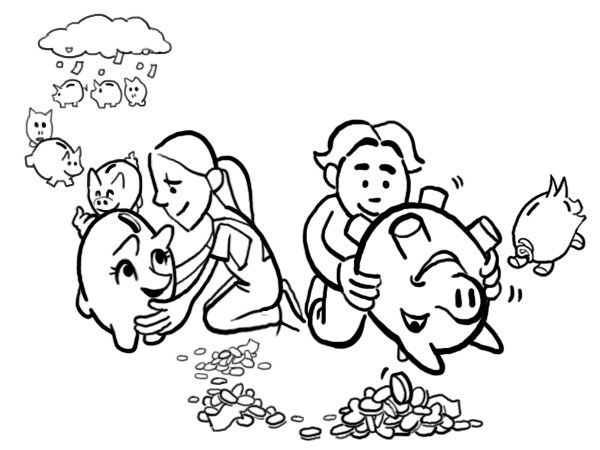Bars, Bricks & Grants
Small-scale fundraising initiatives like selling chocolate bars can help to generate the funds for minor projects in the schoolyard. However, bigger projects need bigger funding sources. The Outdoor PLAYbook is here to help.
Legacy bricks are another great way to raise money for small to medium-size projects such as purchasing a new slide, or building an outdoor learning space or school garden. Parents, community members, and community groups can add their names to these elements in exchange for a donation. You may also consider holding a variety of fundraising events such as silent auctions to raise funds at the school and community level.

Legacy bricks at a Vancouver elementary school (Image: Heather Scott)
To fund most medium-size and large projects, you will be looking to apply for grant funding. There are some key things to keep in mind when applying for grants, and we recommend creating a small team focused specifically on grant applications with a designated leader. This leader should ideally be someone who has either completed successful grant applications in the past, either as part of their career or for other volunteer positions. If such a leader is not available, select an individual who is willing to do a bit of extra work, and reading, to familiarize themselves with the grant writing process.
Below, we provide some quick tips, but we highly recommend reading one of the books in our further reading section to fully understand the grant-writing process. A quick web search will also reveal online grant-writing webinars, which may prove useful in educating yourself about this complex process and provide further tips on how to be successful.
Helpful Hints
- Preparation is key! You don’t want to be scrambling to write a project description the day before a grant is due. Prepare these key elements in advance, and then tailor them to each grant application: introduction to your organization, project description, needs, solution, project plan and activities, rough budget, and evaluation plan (an outline of how you will determine the success of the project).
- The best place to get an idea of what a successful grant application looks like is from the funding source to which you are applying.
- Once you receive grant funding, implementing and tracking the funds is equally important. Many grants will require a post-implementation report.
Grant Sources
The following list of grant sources isn’t necessarily comprehensive, but it will help you get started with applying for funding for a Canadian school project. If you think there is a funding source that should be added to this list, please feel free to contact us. Please keep in mind that resources listed here are national in scope, and there may be other funding sources available to you on a provincial or local level.
- KaBOOM! – This non-profit organization has a stated vision of, “All kids get the childhood they deserve filled with balanced and active play, so they can thrive.” While they are based in the United States, they also fund Canadian projects.
- Canada Post Community Foundation – This foundation works on “Delivering a Brighter Future for Children,” funding projects focused on community, education, and health.
- CST Inspired Minds Learning Project – The Canadian Scholarship Trust Plan is an investment program that works to make higher education possible for all Canadian children. Inspired Minds provides funding for “new and innovative ideas in the growth and development of children ages 0-17.”
- Canada Dry Motts Let’s Play – This organization describes itself as, “A community partnership led by Canada Dry Mott’s and its parent company Dr Pepper Snapple Group to get kids and families active.”
- GoodLife Kids Foundation – This foundation provides funds that support programs that encourage physical activity and help kids live healthy, active lives.
- S’Cool Life Fund – This fund provides grants for D.R.E.A.M.S. (Drama, Recreation, Extra-Curricular, Arts, Music, or Sports), focusing on supporting a richer public elementary school experience.
- RBC Community Funding – RBC provides grants with a number of focus areas, several of which can be used to fund school projects.
- TD Friends of the Environment Foundation – With a focus on educating and engaging children in and with the environment, this is an excellent resource if you’re looking at developing a school garden, outdoor classroom, or adding sustainable stormwater management systems.
- The Lawson Foundation – As part of their new outdoor play strategy, the Lawson Foundation is focused on granting funds for unstructured outdoor play
- Toyota Evergreen Learning Grounds School Ground Greening Grants – These grants help schools create outdoor classrooms to provide students with a healthy place to play, learn and develop a genuine respect for nature
- Local businesses and organizations also like to support community initiatives – reach out to any that you feel might be interested in supporting your project
